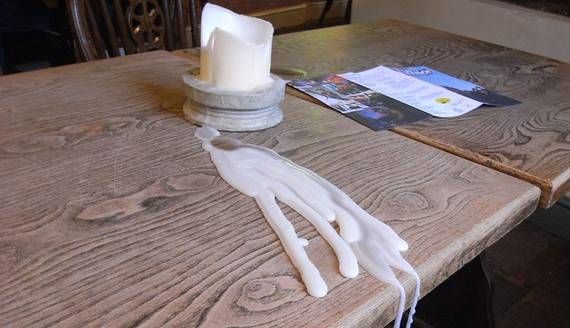
Whether it’s an accidental wax spill during an outdoor dinner or a weird mystery spot that appeared after a party, cleaning unusual substances like candle wax, chewing gum, or paint drips can be a real headache. Many homeowners turn to power washing as a solution—but is it safe and effective for removing these stubborn messes?
The answer is: sometimes yes, sometimes no. Power washing can help, but only when done with the right technique, surface awareness, and cleaning agents. Let’s explore how to safely remove candle wax and similar spills using pressure washing 💦.
🧼 Why Candle Wax Is Hard to Remove
Candle wax becomes a problem because it behaves differently than standard dirt or stains:
- It melts into pores and cracks in concrete, wood, or brick
- It hardens on top of surfaces and becomes brittle
- It can stain porous materials as dyes or oils seep in
- Removing it can leave a greasy residue if not done thoroughly
What seems like a simple scrape job often becomes a multi-step process—especially on rough surfaces like stamped concrete or wood decking.
🕯️ Can Power Washing Remove Candle Wax?
Yes, power washing can help remove candle wax—but it’s not usually a one-and-done fix. Here’s what to consider:
✅ It Works Best On:
- Concrete driveways and patios
- Stone pavers or bricks
- Metal outdoor furniture
⚠️ Use Caution On:
- Wood decks – Wax can soak in and leave a dark stain
- Painted or sealed surfaces – Power washing might damage the coating
- Vinyl siding – May melt or warp under high heat and pressure
Power washing is most effective when used after softening or pre-treating the wax.
Browse Amazon Here For Top Rated Power Washers And Accessories
🧽 Step-by-Step: How to Power Wash Candle Wax
1. Freeze or Scrape Off the Top Layer
Use a plastic scraper, credit card, or putty knife to gently remove as much of the hardened wax as possible. Avoid metal blades on soft surfaces.
2. Soften Any Remaining Wax
Use hot water, a heat gun, or a hairdryer to melt the wax residue. Then blot it with paper towels or absorbent cloths. Be cautious not to burn or overheat the surface.
3. Pre-Treat with Degreaser or Dish Soap
Apply a mild degreasing agent or Dawn dish soap and let it sit for 5–10 minutes. This helps lift the waxy oils from porous surfaces.
4. Power Wash Gently
Set your washer to 1,200–2,000 PSI and use a 25° or 40° fan tip. Spray at a 45-degree angle, keeping at least 12–18 inches from the surface.
If possible, use hot water pressure washing—it works better on oily or greasy substances like wax.
5. Repeat If Necessary
Some wax spills, especially from colored candles or citronella, may require a second round of cleaning. Don’t rush—slow, repeated passes are better than one overly aggressive attempt.
🖍️ What About Crayons, Paint, or Adhesives?
Many of the same techniques apply to other stubborn spills:
| Substance | Pre-Treatment | Power Wash Notes |
|---|---|---|
| Crayons | Freeze then scrub with vinegar | Low pressure, gentle angle |
| Latex Paint | Use a commercial paint remover | Test a small spot before blasting |
| Stickers/Tape | Heat with hair dryer, scrape | Remove residue with citrus degreaser |
| Chewing Gum | Freeze with ice or CO₂ spray | Blast gently after loosening it |
Always test in an inconspicuous area before treating a large or visible spot.
🧴 Optional Cleaning Boosters
You can enhance your power washing results by using:
- Citrus-based degreasers (safe and effective for oily residues)
- Concrete-safe detergent for tough, pigmented wax
- White vinegar + baking soda combo on porous concrete
Avoid harsh solvents unless you’re sure the surface can tolerate them. Acetone, paint thinner, and bleach can damage finishes or discolor certain materials.
⚠️ Surfaces to Avoid Power Washing
Don’t try to power wash wax or other sticky messes from these surfaces:
- Outdoor cushions or fabric – May force wax deeper into the fibers
- Old painted wood – Can peel paint or gouge the grain
- Delicate tile grout – Pressure can dislodge or erode grout lines
- Unsealed flagstone – Too porous and prone to discoloration
Use hand-cleaning methods on these materials instead.
👷 Should You Hire a Pro?
If you’re dealing with:
- Large spills on concrete or porous stone
- Colored wax that has stained the surface
- A composite deck that needs a low-pressure soft wash
- Tough graffiti-like messes (e.g. melted plastic, tar, or paint)
…consider hiring a professional. They’ll use hot water machines, safe detergents, and proper pressure techniques to restore your surface without damage.
✅ Final Thoughts: Candle Wax Doesn’t Stand a Chance
While it’s not the simplest cleanup job, candle wax and similar spills can be removed with power washing when done carefully. The key is preparation—scrape, soften, treat, then wash.
Combine smart techniques with the right tools, and your outdoor surfaces will be spotless again in no time 🕯️💦✨.
Browse Amazon Here For Top Rated Power Washers And Accessories



